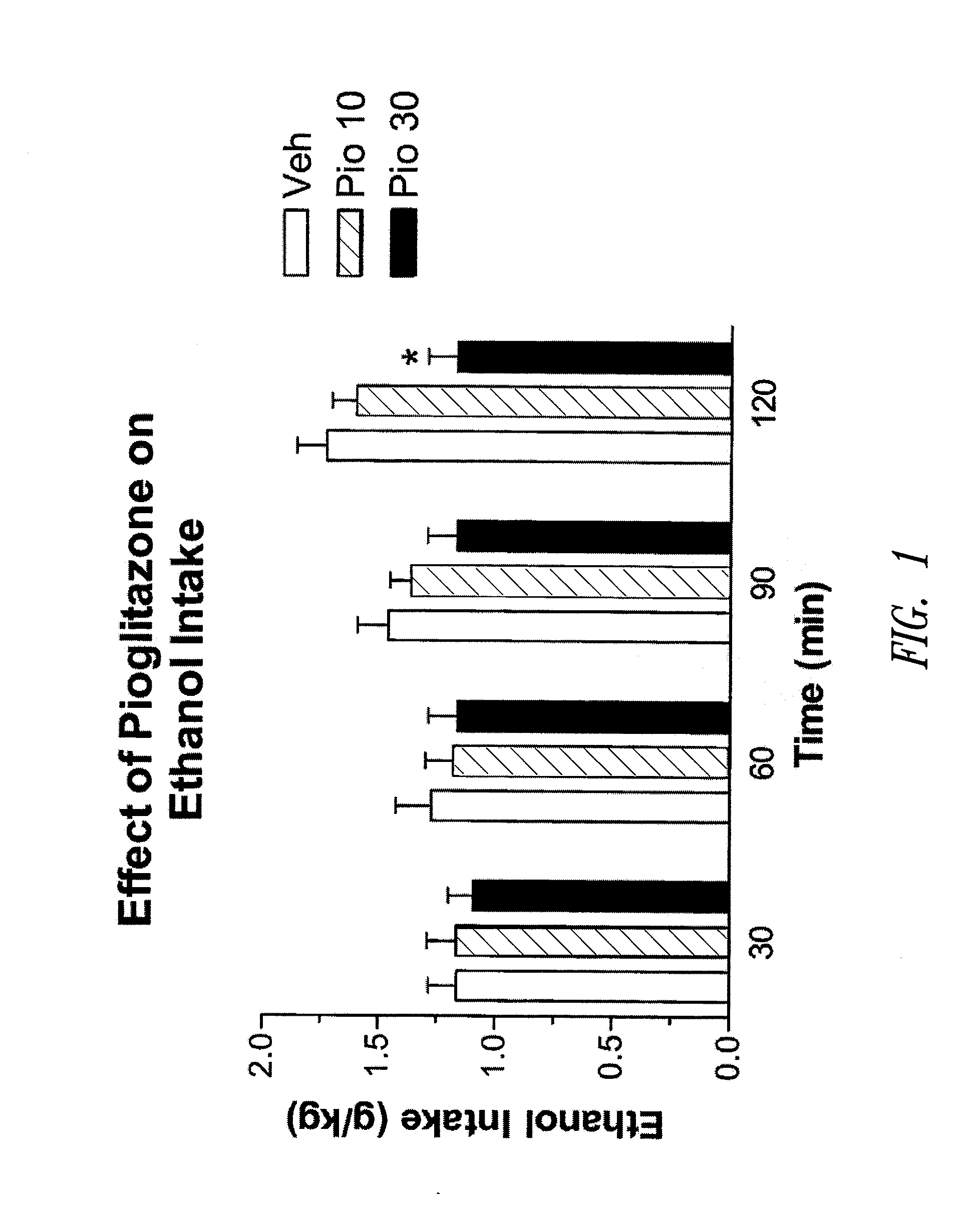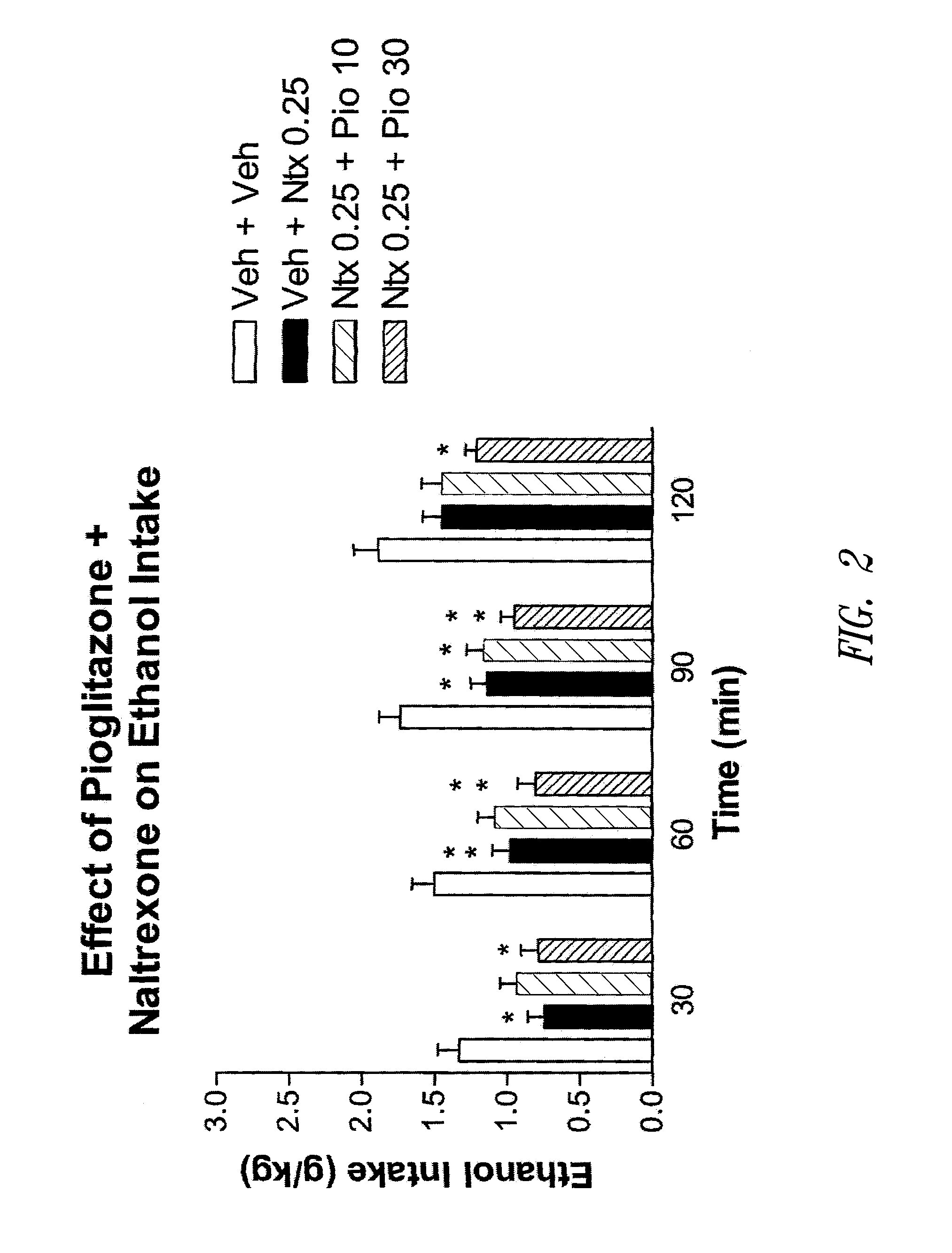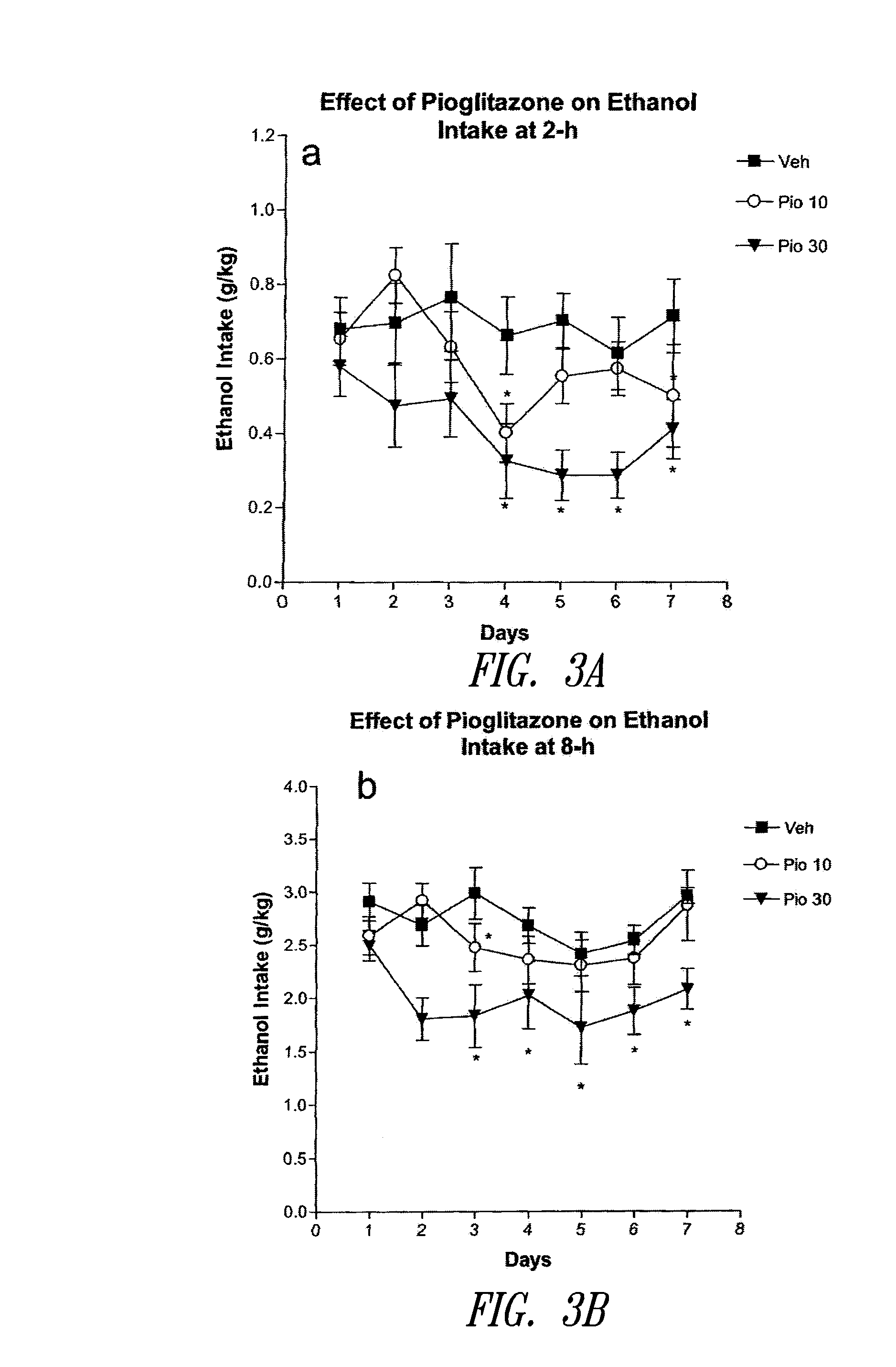Compositions and methods for prophylaxis and treatment of addictions
a technology of agonists and compositions, applied in the direction of drug compositions, biocide, heterocyclic compound active ingredients, etc., can solve the problems of alcohol abuse, affecting work performance, and affecting work performance, and achieve the effects of reducing one or more symptoms
- Summary
- Abstract
- Description
- Claims
- Application Information
AI Technical Summary
Benefits of technology
Problems solved by technology
Method used
Image
Examples
example 1
Effect of Acute Pioglitazone Administration on Voluntary Ethanol Intake
[0286]The effect of acute pioglitazone administration on voluntary ethanol intake was demonstrated by first training rats to drink 10% (w / v) alcohol for 24 hours a day (free choice between water and ethanol). After acquisition of a stable baseline of ethanol intake (6-8 g / kg bw; daily), alcohol access was restricted to 2 hours a day at the beginning of the dark phase. Water and food were freely available.
[0287]Once stable ethanol drinking baseline was reached (also under limited access conditions), rats (n=7) were tested for the effect of pioglitazone (0.0, 10.0, 30.0 mg / kg) using a within subject counterbalanced Latine square design where each animal received all drug doses. Before starting the treatment, rats were trained to gavage administration procedures for three days, during which they received vehicle (distilled water).
[0288]Treatments were carried out at intervals of at least three days. Before each etha...
example 2
Effect of Acute Pioglitazone Plus Naltrexone Administration on Voluntary Ethanol Intake
[0290]In this experiment, the effect of the co-administration of pioglitazone and naltrexone on alcohol consumption was examined to demonstrate that PPARγ agonists could enhance the inhibitory action of opioid antagonists on ethanol intake. The dose of naltrexone used in these studies (0.25 mg / kg) was previously shown to be marginally effective in reducing ethanol intake in msP rats under the same experimental conditions (Ciccocioppo et al. 2007).
[0291]The msP rats (n=8) were prepared for the study as described in Example 1. After acquisition of a stable baseline of ethanol intake, alcohol access was restricted to 2 hours a day at the beginning of the dark phase. Water and food were freely available. Animals were tested for the effect of the combination between pioglitazone (0.0, 10.0, 30.0 mg / kg) given at 12 hours and at 1 hour before access to ethanol and naltrexone (0.0 and 0.25 mg / kg) injected...
example 3
Effect of Subchronic Pioglitazone Administration on Voluntary Ethanol Intake
[0294]The effect of subchronic pioglitazone administration was demonstrated using rats trained to drink 10% (v / v) alcohol for 24 hours a day (free choice between water and ethanol) until a stable baseline of ethanol intake was reached. At this point, msP rats (N=9 / group) were tested for the effect of pioglitazone (0.0, 10.0, or 30.0 mg / kg) on ethanol intake using a between subject design, in which each group of animals received a different dose of drug. Before starting the treatment, rats were trained to gavage administration procedures for three days, during which they received vehicle (distilled water).
[0295]Pioglitazone treatment was continued for seven consecutive days, and drug (or vehicle) was administered twice a day at 12 hour and at 1 hour before the beginning of dark period of the light / dark cycle. Alcohol, water and food intakes were monitored at 2, 8 and 24 hours. Fluids and food intakes were mon...
PUM
| Property | Measurement | Unit |
|---|---|---|
| time | aaaaa | aaaaa |
| humidity | aaaaa | aaaaa |
| temperature | aaaaa | aaaaa |
Abstract
Description
Claims
Application Information
 Login to View More
Login to View More - R&D
- Intellectual Property
- Life Sciences
- Materials
- Tech Scout
- Unparalleled Data Quality
- Higher Quality Content
- 60% Fewer Hallucinations
Browse by: Latest US Patents, China's latest patents, Technical Efficacy Thesaurus, Application Domain, Technology Topic, Popular Technical Reports.
© 2025 PatSnap. All rights reserved.Legal|Privacy policy|Modern Slavery Act Transparency Statement|Sitemap|About US| Contact US: help@patsnap.com



